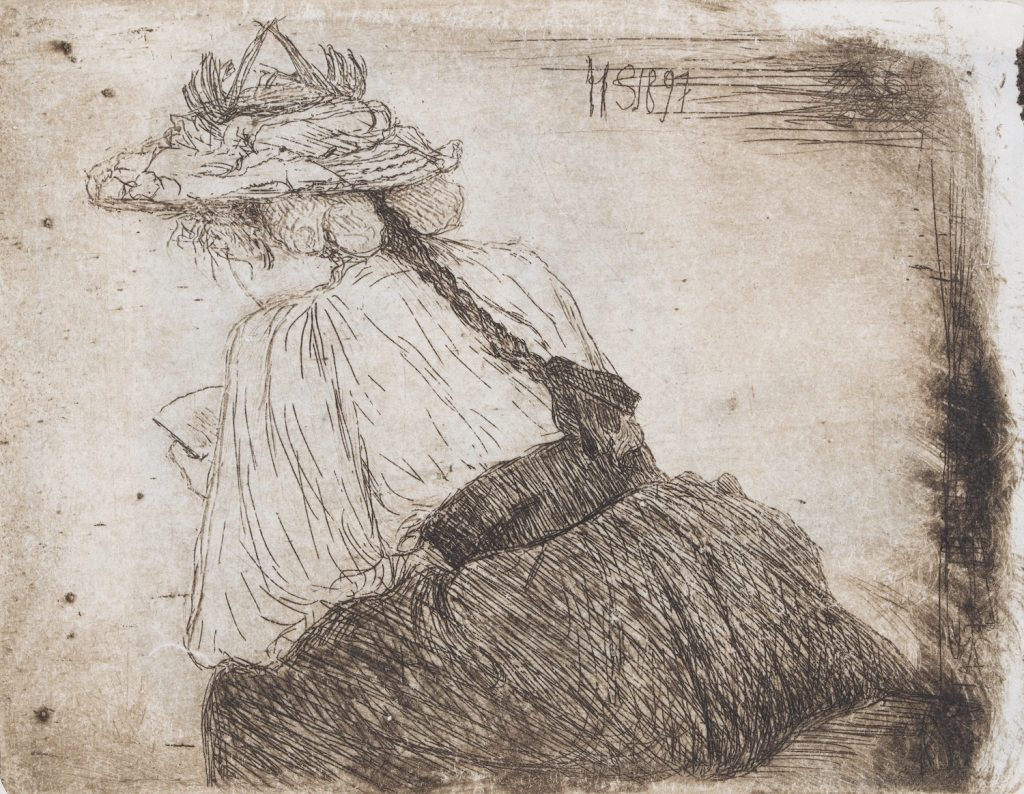Hugo Simberg, Girl Reading, 1897
MAY 2021
Gösta Serlachius Fine Arts Foundation’s collection entails almost thirty graphic artworks by Hugo Simberg (1873–1917). The proportion of pieces of graphic art in his oeuvre is notable: a quarter of the number of works have been created using the methods of graphic art. Simberg was taught by Akseli Gallen-Kallela (1865–1931), a pioneer of Finnish art graphics.
In August 1895, 22-year-old art student Hugo Simberg set off to Ruovesi to study with Akseli Gallen-Kallela. Simberg had become tired of academic studies at Finnish Art Association’s Drawing School and longed for new kinds of impressions. He did not know that Gallen-Kallela had become inspired by methods of art graphics and acquired from London the necessary equipment for creating graphics. The master had started experimenting in wood cut but exercised his skills also in metal graphic. Returned to Ruovesi early 1897, Simberg started determinedly to learn etching or line etching which became a dear art form for him.
Hugo Simberg soon noticed that he could realise his own predilections in art graphic. An artwork needed not be large to provoke thoughts. A small size was enough. On a primed plate one could easily and quickly draw passing moments. His subjects often included depictions of family members’ everyday activities. The drawing created on the plate was etched and printed as a completed artwork.
Even though Simberg is best known for his death and devil themed artworks, he was also interested in portraying people. Especially round the year 1897, the number of motifs of portraiture started to increase in his production. In summer 1897, Simberg travelled to celebrate midsummer at his family’s summer place in Niemenlautta on Vyborg Bay, and there he drew character studies of his family on plates.
Girl Reading (1897) depicts the artist’s sister Elma concentrating in reading a book. Even though the young woman wearing a hat has been depicted from behind, one can sense a glimpse of her figure. Small inclination forward reflects her enthusiasm and sinking into an exciting story. The artist made another, vertical version of the same scene.
Often Simberg depicted persons either sunken in their thoughts or from behind as if secretly watching. The mysteries of mind and contemplative persons were often that subjects in symbolistic art, which Simberg mainly represented. By depicting the back of a person, the artist focused the people’s attention to the individual and hir thoughts.
Akseli Gallen-Kallela and Hugo Simberg created the framework for Finnish art graphics. In 1890s, graphic art was not comparable to painting; it was yet a specialty among the art forms. Simberg was one of the first artists to exhibit graphic works in Finnish artists’ autumn exhibition in 1897. On the first part of the 20th century, enthusiasm towards the methods of graphics started to grow, and in 1907 the first comprehensive exhibition of graphic art was organized in Helsinki.
Eeva Ilveskoski
Curator
Sources:
Marja Lahelma. Hugo Simberg – Ateneumin taiteilijat. Ateneum, Helsinki 2017.
Heikki Malme. Hugo Simberg: Taidegrafiikan taitaja. Ateneum, Helsinki 2000.


